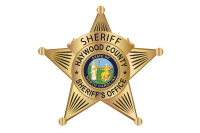Interrupting irruptives
Some winters there will be an influx of northern bird species into the southeastern United States. Here in the Smokies region of Western North Carolina, it’s been a few years since this has happened. Early reports indicate that this winter could be an “irruptive” year for various hawks and owls as well as evening grosbeaks, purple finches, red and white-winged crossbills, and pine siskins.
Ornithologists call these irregular movements “irruptions.” John C. Kricher describes the phenomenon in A Field Guide to Eastern Forests of North America (1988): “These dramatic mass movements ... are unusual both because they involve large numbers of birds and because, unlike migration, they are not generally predictable .... There is no local indication that an irruption will occur.... The appearance of irruptive species is called a ‘flight year’ ... thought to be caused by periodic unpredictable food shortages in the breeding ranges of these species.
Seed-eating species may irrupt in years following the cessation of masting. Many young are produced when seeds abound during masting, producing an over-population. When the seed crops drop precipitously, seed-dependent species ... are forced southward. Not all individuals of the irruptive species leave the nesting areas, however. Irruptive flocks tend to be comprised predominantly of young birds. Of adults, females seem to outnumber males, although data are not well established on this point.”
Bird species like hawks and owls would be driven southward when there is a shortage of voles and other rodents or small mammals upon which they are dependent for food. The evening grosbeak is perhaps the most spectacular looking of the irruptive species. Despite the fact that a flock of evening grosbeaks can consume an expensive meal at the backyard birdfeeder, this large and colorful northern finch is nevertheless welcomed by most bird fanciers.
Distinguished by their large conical bills that may be whitish or pale greenish, undulating flight, white and black wing patches, and brilliant yellow back and under parts, evening grosbeaks are unmistakable — especially the male, which displays a gaudy yellow forehead.
Related Items
Various sources indicate that evening grosbeaks made a significant “ingression” down the Appalachian belt starting in the late 1940s. Great Smoky Mountains National Park naturalist Arthur Stupka recorded in his journals (subsequently published in 1963 as Notes on the Birds Great Smoky Mountains National Park by the University of Tennessee Press in an edition that is unfortunately out of print) that his “first record of evening grosbeaks within GSMNP was on December 15, 1951, when a flock of 12 to 15 of these strikingly-plumaged birds was observed.”
The white-winged is perhaps the most rare of the irruptive species in our area. I last saw white-winged crossbills along the road to our house near Bryson City back in 1979. They were attracted to the salt on the pavement that the Department of Transportation had spread to prevent icing. As a matter of fact that was also the first time I had ever seen white-winged crossbills.)
Both white-winged and red crossbills (the latter being a more common irruptive) take their name from overlapping tips of the upper and lower mandibles. A resident of evergreen forests, these birds insert their crossed mandibles into conifer cones, forcing the scales apart while the tongue scoops the seed into the mouth. Accordingly, one of the best places to locate irruptive white-winged or red crossbills is in the higher elevation spruce-fir forests of the southern Blue Ridge.
George Ellison wrote the biographical introductions for the reissues of two Appalachian classics: Horace Kephart’s Our Southern Highlanders and James Mooney’s History, Myths, and Sacred Formulas of the Cherokees. In June 2005, a selection of his Back Then columns was published by The History Press in Charleston as Mountain Passages: Natural and Cultural History of Western North Carolina and the Great Smoky Mountains. Readers can contact him at P.O. Box 1262, Bryson City, N.C., 28713, or at This email address is being protected from spambots. You need JavaScript enabled to view it..









